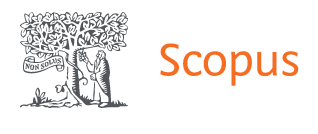Determination of risk factors for scoliosis in school-age children using a questionnaire
DOI:
https://doi.org/10.32782/2077-6594/2025.2/05Keywords:
scoliosis, school-age children, prevalence, questionnaireAbstract
The purpose of the work is to investigate risk factors according to scientific and information sources to develop a methodology for assessing the risk of scoliosis in children through questionnaires.Materials and methods. Scientific information sources used to determine the risk factors for the spread of scoliosis among school- age children were analyzed. The bibliosemantic method, content analysis, analytical, systemic approach and analysis, sociological (to create a questionnaire) was applied. bibliosemantic, content analysis and systemic approach and analysis, sociological (to create a questionnaire).According to the literature, we divided the risk factors for scoliosis in children into seven groups: medical; genetic (heredity); postural (posture assessments of schoolchildren); behavioral; household; and factors related to medical literacy and awareness (frequency of visits to a family doctor and awareness of disease prevention).Results. The scientific sources of information on determining the main risk factors for scoliosis in school-age children, which were conducted in different countries of the world, were analyzed, and the existing questionnaires were supplemented with questions related to the development of scoliosis in schoolchildren in Ukraine. In modern studies on the assessment of risk factors, the main contextual factors were identified, namely: demographic, medical, genetic, developmental, behavioral factors, household and factors related to medical literacy and awareness. Studying their influence is important for preventing the disease and preventing complications in the complex course of scoliotic disease, as well as raising awareness among parents and the public about the prevention and timely detection of scoliosis, as the most common disease among diseases of the musculoskeletal system.Conclusions. As a result of the analysis of risk factors, various groups of factors have been identified that underlie the study of the occurrence of scoliosis as the most common disease among diseases of the musculoskeletal system in school-age children, namely:1. Demographic factors associated with morphological parameters of the body, age and gender, since a characteristic feature of scoliosis is its tendency to progress during puberty and intensive skeletal growth, and it was also found that IBS occurs 10 times more often in girls than in boys.2. A study of medical factors has established that schoolchildren who had a crossbite have scoliosis.3. The severity and progression of scoliotic disease is influenced by a genetic factor - such as heredity.4. Postural factors - a sedentary lifestyle, accompanied by prolonged sitting and minimal physical activity, are also associated with an increased risk of scoliosis.5. At the same time, it has been analyzed that behavioral factors, such as insufficient hours of sleep, vitamin deficiency and active sports activity, affect the development and progression of scoliosis.6. Medical literacy and knowledge related to the basics of detecting scoliosis in school-age children are important for society, as they affect its early detection.Thus, to prevent the disease and prevent complications of the complex course of scoliotic disease in children, it is important to identify risk factors that lead to the occurrence of this pathology in a timely manner by conducting a survey of parents of children in educational institutions and require a solution at both the public and state levels.
References
Li M, Nie Q, Liu J, Jiang Z. Prevalence of scoliosis in children and adolescents: a systematic review and meta-analysis.Front Pediatr. 2024;12:1399049. DOI: 10.3389/fped.2024.1399049.
Khadour FA, Khadour YA, Albarroush D. Association between postural habits and lifestyle factors of adolescent idiopathic scoliosis in Syria.Sci Rep. 2024; 14 (1): 26784. DОІ: 10.1038/s41598-024-77712-z.
Sedrez, Juliana Adami, et al. Risk factors associated with structural postural changes in the spinal column of children and adolescents. Revista Paulista de Pediatria, 33 (2015): 72–81. DОІ: 10.1016/j.rpped.2014.11.012.
Ciaccia, Maria Célia Cunha, et al. Prevalence of scoliosis in public elementary school students. Revista paulista de pediatria, 35 (2017): 191–198. DОІ: 10.1590/1984-0462/;2017;35;2;00008.
Ames, Christopher P, et al. Development of predictive models for all individual questions of SRS-22R after adult spinal deformity surgery: a step toward individualized medicine. European Spine 2019; 28 (1): 1998–2011. DОІ: 10.1007/s00586-019-06079-x.
Crawford CH 3rd, Glassman SD, Bridwell KH, Berven SH, Carreon LY. The minimum clinically important difference in SRS-22R total score, appearance, activity and pain domains after surgical treatment of adult spinal deformity.Spine. 2015; 40 (6): 377–381. DОІ: 10.1097/BRS.0000000000000761.
Ward WT, Friel NA, Kenkre TS, Brooks MM, Londino JA, Roach JW. SRS-22r Scores in Nonoperated Adolescent Idiopathic Scoliosis Patients With Curves Greater Than Forty Degrees. Spine. 2017; 42 (16): 1233–1240. DОІ: 10.1097/BRS.0000000000002004.
Stone LE, Upasani VV, Pahys JM, et al. SRS-22r Self-Image After Surgery for Adolescent Idiopathic Scoliosis at 10-year Follow-up. Spine. 2023; 48 (10): 683–687. DОІ: 10.1097/BRS.0000000000004620.
Gum JL, Shasti M, Yeramaneni S, et al. Improvement in SRS-22R Self-Image Correlate Most with Patient Satisfaction after 3-Column Osteotomy. Spine (Phila Pa 1976). 2021; 46 (12): 822–827. DОІ: 10.1097/BRS.0000000000003897.
Анкета щодо опитування пацієнта. https://www.srs.org/Search-Results?Search_Keywords=%20SRS-22r.
Scaturro D, Costantino C, Terrana P, et al. Risk Factors, Lifestyle and Prevention among Adolescents with Idiopathic Juvenile Scoliosis: A Cross Sectional Study in Eleven First-Grade Secondary Schools of Palermo Province, Italy. Int J Environ Res Public Health. 2021; 18 (23): 12335. Published 2021 Nov 24. DOI: 10.3390/ijerph182312335.
Dunn J, Henrikson NB, Morrison CC, Blasi PR, Nguyen M, Lin JS. Screening for Adolescent Idiopathic Scoliosis: Evidence Report and Systematic Review for the US Preventive Services Task Force. JAMA. 2018; 319 (2): 173–187. DОІ: 10.1001/jama.2017.11669.
Zou Y, Lin Y, Meng J, Li J, Gu F, Zhang R. The Prevalence of Scoliosis Screening Positive and Its Influencing Factors: A School-Based Cross-Sectional Study in Zhejiang Province, China. Front Public Health. 2022; 10: 773594. Published 2022 Jul 18. DОІ: 10.3389/fpubh.2022.773594.
Almahmoud OH, Baniodeh B, Musleh R, Asmar S, Zyada M, Qattousah H. Overview of adolescent idiopathic scoliosis and associated factors: a scoping review.Int J Adolesc Med Health. 2023; 35 (6): 437–441. DОІ: 10.1515/ijamh-2023-0166.
Ghanem I, Rizkallah M. Adolescent idiopathic scoliosis for the primary care physician: frequently asked questions. Curr Opin Pediatr. 2019; 31 (1): 48–53. DОІ: 10.1097/MOP.0000000000000705.
Kim S, Uhm JY, Chae DH, Park Y. Low Body Mass Index for Early Screening of Adolescent Idiopathic Scoliosis: A Comparison Based on Standardized Body Mass Index Classifications.Asian Nurs Res (Korean Soc Nurs Sci). 2020; 14 (1): 24–29. DОІ: 10.1016/j.anr.2019.12.003.
Escrivá D, Benet I, Burgos J, Barrios C. Adiposity-Age Distribution and Nutritional Status in Girls With Adolescent Idiopathic Scoliosis. Spine Deform. 2019; 7 (4): 565–570. DОІ: 10.1016/j.jspd.2018.10.007.
Ramírez, Manuel, et al. Body composition in adolescent idiopathic scoliosis. European Spine Journal, 2013, 22: 324–329. DОІ: 10.1007/s00586-012-2465-y.
Barrios, Carlos, et al. Anthropometry and body composition profile of girls with nonsurgically treated adolescent idiopathic scoliosis.Spine, 2011, 36 (18): 1470–1477. DOI: 10.1097/BRS.0b013e3181f55083.
Valdovino AG, Bastrom TP, Reighard FG, et al. Obesity Is Associated With Increased Thoracic Kyphosis in Adolescent Idiopathic Scoliosis Patients and Nonscoliotic Adolescents.Spine Deform. 2019; 7 (6): 865–869. DOI: 10.1016/j.jspd.2019.03.010.
Chen P, Zhou Y, Tan Z, et al. Scoliosis in osteogenesis imperfecta: identifying the genetic and non-genetic factors affecting severity and progression from longitudinal data of 290 patients.Orphanet J Rare Dis. 2023; 18 (1): 295. Published 2023 Sep 20. DOI: 10.1186/s13023-023-02906-z.
Білоус АМ., Куліш НВ., Смаглюк ЛВ. Зіставлення морфофункціонального стану зубощелепної ділянки й опор- но-рухового апарату в пацієнтів із перехресним прикусом. Український стоматологічний альманах. 2013; (4): 58–60. http://nbuv.gov.ua/UJRN/Usa_2013_4_17.
Lyakhova NA, Filatova VL, Sheshukova OV, et al. Studying and analyze the factors that affect compliance dentist recommendations from parents of child patients.Wiad Lek. 2020; 73 (8): 1730–1734.
Lamb CD, Quinones A, Zhang JY, et al. Evaluating Adult Idiopathic Scoliosis as an Independent Risk Factor for Critical Illness in SARS-CoV-2 Infection World Neurosurg. 2023. 19 (7). DOI:.10.1016/j.wneu.2023.06.041.
Rrecaj-Malaj S, Beqaj S, Krasniqi V, Qorolli M, Tufekcievski A. Outcome of 24 Weeks of Combined Schroth and Pilates Exercises on Cobb Angle, Angle of Trunk Rotation, Chest Expansion, Flexibility and Quality of Life in Adolescents with Idiopathic Scoliosis.Med Sci Monit Basic Res. 2020; 26: e920449. DOI: 10.12659/MSMBR.920449.
Watanabe K, Michikawa T, Yonezawa I, et al. Physical Activities and Lifestyle Factors Related to Adolescent Idiopathic Scoliosis. J Bone Joint Surg Am. 2017; 99 (4): 284–294. DOI: 10.2106/JBJS.16.00459.
Tahirbegolli B, Obertinca R, Bytyqi A, et al. Factors affecting the prevalence of idiopathic scoliosis among children aged 8–15 years in Prishtina, Kosovo. Sci Rep. 2021; 11 (1): 16786. Published 2021 Aug 18. DОІ: 10.1038/s41598-021-96398-1.
Shang Z, Liu Y, Yuan H, et al. Inherited genetic predisposition and imaging concordance in degenerative lumbar scoliosis patients and their descendants.J Orthop Surg Res. 2024; 19 (1): 494. Published 2024 Aug 21. DOI: 10.1186/s13018-024-05000-7.
Newman M, Hannink E, Barker KL. Associations Between Physical Activity and Adolescent Idiopathic Scoliosis: A Systematic Review and Meta-analysis. Arch Phys Med Rehabil. 2023; 104 (8): 1314–1330. DOI: 10.1016/j.apmr.2023.01.019.
Niaradi, Fernanda dos Santos Lopes, Maíra Fonseca dos Santos Lopes Niaradi, and Maria Elisabete Rodrigues Freire Gasparetto. Effect of Eutonia, Holistic Gymnastics, and Pilates on body posture for pre-adolescent girls: Randomized clinical trial. Journal of Bodywork and Movement Therapies 30 2022; 30 (4): 226–236. DOI: 10.1016j.jbmt.202.02.021.
Radaković M, Madić D, Radaković K, Protić-Gava B, Radanović D, & Marković KŽ. Comparison of posture between gymnasts and non-athletes. Acta kinesiologica, 2016; 10 (1), 62–65.
Zhamardiy VO, Shkola OM, Okhrimenko IM, Strelchenko OG, Aloshyna AI, Opanasiuk FH, Griban GP, Yahodzinskyi VP, Mozolev OM, Prontenko KV. Checking of the methodical system efficiency of fitness technologies application in students’ physical education. Wiad Lek. 2020; 73 (2): 332–341.
Hurley-Novatny A, Chang D, Murakami K, Wang L, Li H. Poor bone health in Duchenne muscular dystrophy: a multifactorial problem beyond corticosteroids and loss of ambulation.Front Endocrinol (Lausanne). 2024; 15: 1398050. DOI: 10.3389/fendo.2024.1398050.
Liang ZT, Guo CF, Li J, Zhang HQ. The role of endocrine hormones in the pathogenesis of adolescent idiopathic scoliosis. FASEB J. 2021; 35 (9): e21839. DOI: 10.1096/fj.202100759R.
Latalski M, Danielewicz-Bromberek A, Fatyga M, Latalska M, Kröber M, Zwolak P. Current insights into the aetiology of adolescent idiopathic scoliosis. Arch Orthop Trauma Surg. 2017; 137 (10): 1327–1333. DOI: 10.1007/s00402-017-2756-1.
Yang J, Huang S, Cheng M, Tan W, Yang J. Postural habits and lifestyle factors associated with adolescent idiopathic scoliosis (AIS) in China: results from a big case-control study.J Orthop Surg Res. 2022; 17 (1): 472. DOI: 10.1186/s13018-022-03366-0.
Utami, Feryanda; Adyas, Atikah. Analysis Of Practical Methods Of Early Detection Of Scoliosis.Journal of Prosthetics Orthotics and Science Technology, 2022, 1 (2): 81–92. DOI: 10.36082/jpost.v1i2.830.
Інформаційний листок щодо виявлення сколіозу: https://www.mdpi.com/article/10.3390/children9040563/s1.
de Groot C, Heemskerk JL, Willigenburg NW, Altena MC, Kempen DHR. Educating Parents Improves Their Ability to Recognize Adolescent Idiopathic Scoliosis: A Diagnostic Accuracy Study.Children (Basel). 2022; 9 (4): 563. Published 2022 Apr 15. DOI: 10.3390/children9040563.
Dou Q, Zhu Z, Zhu L, et al. Academic-related factors and daily lifestyle habits associated with adolescent idiopathic scoliosis: a case-control study. Environ Health Prev Med. 2023; 28: 23. DОІ: 10.1265/ehpm.22-00243.
Scaturro D, Costantino C, Terrana P, Vitagliani F, Falco V, Cuntrera D, Sannasardo CE, Vitale F, Letizia Mauro G. Risk Factors, Lifestyle and Prevention among Adolescents with Idiopathic Juvenile Scoliosis: A Cross Sectional Study in Eleven First-Grade Secondary Schools of Palermo Province, Italy. Int J Environ Res Public Health. 2021; 24 (11); 18 (23): 12335. DОІ: 10.3390/ijerph182312335.








